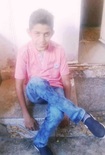5 oct 2015
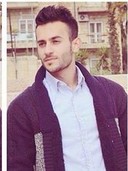
The occupation Intelligence decided on Monday night not to release the body of the 19-year old Fadi Alloun and give it to his family to bury him tonight as previously decided.
Al-Dameer organization lawyer, Mohammad Mahmoud, explained that he received a phone call from the Israeli Intelligence to inform him that Fadi’s body won’t be released tonight due to security reasons and because of the clashes in the neighborhood of Shu’fat.
The body is supposed to be buried in Shu’fat cemetery and the funeral tent is in Beit Hanina.
It is noteworthy that the Intelligence decided earlier today to release the body and bury him in Shu’fat cemetery in the presence of 50-70 people only. They also conditioned the family to deposit a 20-thousand NIS bail to ensure commitment to the rules.
Al-Dameer organization lawyer, Mohammad Mahmoud, explained that he received a phone call from the Israeli Intelligence to inform him that Fadi’s body won’t be released tonight due to security reasons and because of the clashes in the neighborhood of Shu’fat.
The body is supposed to be buried in Shu’fat cemetery and the funeral tent is in Beit Hanina.
It is noteworthy that the Intelligence decided earlier today to release the body and bury him in Shu’fat cemetery in the presence of 50-70 people only. They also conditioned the family to deposit a 20-thousand NIS bail to ensure commitment to the rules.
|
|
Feelings of shock and grief hang over the Martyr’s family, 19-year old Fadi Samir Alloun, who was murdered with cold blood in the area of Al-Musrara near Damascus Gate in Jerusalem.
Fadi was the only support his father had and was loved by all of his family and neighbors. Unjust laws deprive the family from a “reunion” The Martyr Fadi Alloun was deprived from seeing his mother and brother Mohammad at young age when his mother went to Amman, Jordan when he was only 5 years old. She was not allowed to come back to the country under the pretext of “violating the reunion conditions”. |
She stayed with her 18-year old son Mohammad in Amman while the Martyr remained with his father in the city of Jerusalem.
The Martyr’s father denies the occupation’s story
The Martyr’s father, Samir, said that the occupation forces interrogated him regarding his son and his educations and how he used to spend his day.
Samir denied the charges against his son and the justifications of shooting him and said: “Israeli claims and fabricated charges against my son to justify the murder. My son went to pray and was running away from settlers who were chanting “Death for Arabs” near Al-Musrara and tried to seek protection from an Israeli police patrol -seemed like he was assaulted- but one police officer dismounted from the vehicle and shot and killed him.”
Assaulting and humiliating the Martyr’s body
The occupation authorities did not only murdered Fadi, but allowed the settlers to kick his body while laying on the ground, and also raided and searched his entire houses and confiscated cell phones.
The occupation forces continued their assault on the family in an attempt for revenge and arrested the Martyr’s father and uncle; they described the Martyr as a “terrorist”.
Raiding, searching, damaging and use of electric gun…
The Martyr’s aunt explained to Wadi Hilweh Information Center what happened during the raid on their house and said: “We were home in a state of shock after the news of the Martyrdom of Fadi and the way he was murdered. Then, we were surprised with large Israeli forces raided our house without any notice and they were deployed in the rooms. They pushed the women and used force to evacuate them from the house.”
She explained that the forces shocked 4 women with the electric gun and assaulted her and pushed her to the ground.
She added: “They asked about his father and then detained him during the search, while other soldiers asked about Fadi’s room to search it.”
She continued: “After the soldiers finished the search and confiscated cell phones, they arrested the Martyr’s father and uncle and covered their faces with black bags.”
Release
The occupation authorities released on Sunday afternoon the Martyr’s uncle, Rami Alloun, and signs of assault and beating were obvious on him.
Detaining the Martyr’s body
The occupation authorities are still detaining the Martyr’s body in Abu Kbeir hospital and refuse to hand the body to his family.
The Martyr’s father denies the occupation’s story
The Martyr’s father, Samir, said that the occupation forces interrogated him regarding his son and his educations and how he used to spend his day.
Samir denied the charges against his son and the justifications of shooting him and said: “Israeli claims and fabricated charges against my son to justify the murder. My son went to pray and was running away from settlers who were chanting “Death for Arabs” near Al-Musrara and tried to seek protection from an Israeli police patrol -seemed like he was assaulted- but one police officer dismounted from the vehicle and shot and killed him.”
Assaulting and humiliating the Martyr’s body
The occupation authorities did not only murdered Fadi, but allowed the settlers to kick his body while laying on the ground, and also raided and searched his entire houses and confiscated cell phones.
The occupation forces continued their assault on the family in an attempt for revenge and arrested the Martyr’s father and uncle; they described the Martyr as a “terrorist”.
Raiding, searching, damaging and use of electric gun…
The Martyr’s aunt explained to Wadi Hilweh Information Center what happened during the raid on their house and said: “We were home in a state of shock after the news of the Martyrdom of Fadi and the way he was murdered. Then, we were surprised with large Israeli forces raided our house without any notice and they were deployed in the rooms. They pushed the women and used force to evacuate them from the house.”
She explained that the forces shocked 4 women with the electric gun and assaulted her and pushed her to the ground.
She added: “They asked about his father and then detained him during the search, while other soldiers asked about Fadi’s room to search it.”
She continued: “After the soldiers finished the search and confiscated cell phones, they arrested the Martyr’s father and uncle and covered their faces with black bags.”
Release
The occupation authorities released on Sunday afternoon the Martyr’s uncle, Rami Alloun, and signs of assault and beating were obvious on him.
Detaining the Martyr’s body
The occupation authorities are still detaining the Martyr’s body in Abu Kbeir hospital and refuse to hand the body to his family.
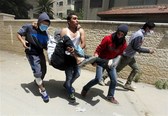
Four Palestinian youths were killed by Israeli fire within three days, while nearly 500 others have been injured in clashes with Israeli soldiers and settlers across the occupied West Bank and Jerusalem since Saturday, the Palestinian Red Crescent said on Monday.
At least 41 Palestinians have been injured Monday during the reported clashes, raising the number of injured to 499 Palestinians within three days.
On Monday, five Palestinians had been shot with live rounds, while five others were injured by rubber-coated steel bullets.
The sources said that some 26 Palestinians had suffered excessive tear gas inhalation, while three others were injured when they were physically assaulted.
During the past three days, Israeli forces have killed four Palestinians, including a 13-year-old boy, in fierce clashes that have swept across the occupied West Bank and Jerusalem since Saturday.
The Palestinian Red Crescent explained in a statement issued late on Monday that 41 Palestinians had been shot with live rounds, while at least 134 were hit with rubber-coated steel bullets.
297 others suffered excessive tear gas inhalation, while 10 others were subjected to severe beatings by Israeli soldiers or settlers, the statement added.
The Palestinian Red Cross on Sunday declared a state of emergency across the occupied Palestinian territory, and said it was putting all its staff, teams and volunteers on standby.
Tensions had been steadily mounting in recent weeks across West Bank and specially in occupied Jerusalem due to Israeli restrictions on Palestinians seeking to enter the Al-Aqsa Mosque compound and Israeli settlers’ provocative and deadly attacks on Palestinian citizens and properties.
At least 41 Palestinians have been injured Monday during the reported clashes, raising the number of injured to 499 Palestinians within three days.
On Monday, five Palestinians had been shot with live rounds, while five others were injured by rubber-coated steel bullets.
The sources said that some 26 Palestinians had suffered excessive tear gas inhalation, while three others were injured when they were physically assaulted.
During the past three days, Israeli forces have killed four Palestinians, including a 13-year-old boy, in fierce clashes that have swept across the occupied West Bank and Jerusalem since Saturday.
The Palestinian Red Crescent explained in a statement issued late on Monday that 41 Palestinians had been shot with live rounds, while at least 134 were hit with rubber-coated steel bullets.
297 others suffered excessive tear gas inhalation, while 10 others were subjected to severe beatings by Israeli soldiers or settlers, the statement added.
The Palestinian Red Cross on Sunday declared a state of emergency across the occupied Palestinian territory, and said it was putting all its staff, teams and volunteers on standby.
Tensions had been steadily mounting in recent weeks across West Bank and specially in occupied Jerusalem due to Israeli restrictions on Palestinians seeking to enter the Al-Aqsa Mosque compound and Israeli settlers’ provocative and deadly attacks on Palestinian citizens and properties.
|
|
A RIOT has reportedly broken out on the main street of Bethlehem city, as Palestinians protest the killing of 13-year-old schoolboy Abdul Rahman Obeidallah by Israeli snipers, in Aida refugee camp.
Hundreds of angry protesters chanting “Allah Akhbar”, a traditional cry against injustice, blocked the road towards Rachel’s tomb after the boy, who was around 5ft 4″ tall, was shot by Israeli snipers whilst still wearing his school uniform. As the demonstration arrived near the 300 Israeli military checkpoint annexed to the wall north of Bethlehem, IOF immediately fired teargas and sound grenades to repress it. However, intense clashes are still continuing inside the camp. |
Photographs from the scene show him being carried away from the violence still wearing his school uniform and backpack.
Another schoolboy was wounded in the shooting, still in surgery at the Beit Jala hospital. He was shot during a second day of violence at Aida refugee camp, in Bethlehem in the West Bank.
Another schoolboy was reportedly shot in the head. Still to be identified, he is currently undergoing emergency surgery at the government run hospital in Beit Jala, around 1km away.
The pair were rushed to the hospital around 1.45 pm but Abdul-Rahman was pronounced dead shortly afterwards.
One witness, who accompanied the casualty to hospital, said shortly before the news of the boy’s death was known: ” I was walking back to my home in the camp when it happened. They got hit by real bullets, live ammunition.
“Their family is here, there are a lot of people. It’s just tense, we’re waiting to hear.”
One local, who did not wish to be named, said: “He was doing nothing. He was just looking. He had come home from school and his mother had sent him to the shop.
“He was just standing, looking. And they shot him right here, in the chest. It opened right up, huge, and he died in the hospital. His mother and his father, they are going mad”.
Violent clashes broke out near Bethlehem, on Sunday afternoon in response to the shooting of Palestinian student Fadi Alloun (19) in Jerusalem on Saturday.
Israeli forces fired tear gas and rubber bullets at around 100 protesters at Aida refugee camp at around 4pm, and clashes continued into the night.
Four Palestinian youngsters have been shot dead by IOF within the past two days alone, and about 200 people have been reported injured at locations all over the West Bank.
Another schoolboy was wounded in the shooting, still in surgery at the Beit Jala hospital. He was shot during a second day of violence at Aida refugee camp, in Bethlehem in the West Bank.
Another schoolboy was reportedly shot in the head. Still to be identified, he is currently undergoing emergency surgery at the government run hospital in Beit Jala, around 1km away.
The pair were rushed to the hospital around 1.45 pm but Abdul-Rahman was pronounced dead shortly afterwards.
One witness, who accompanied the casualty to hospital, said shortly before the news of the boy’s death was known: ” I was walking back to my home in the camp when it happened. They got hit by real bullets, live ammunition.
“Their family is here, there are a lot of people. It’s just tense, we’re waiting to hear.”
One local, who did not wish to be named, said: “He was doing nothing. He was just looking. He had come home from school and his mother had sent him to the shop.
“He was just standing, looking. And they shot him right here, in the chest. It opened right up, huge, and he died in the hospital. His mother and his father, they are going mad”.
Violent clashes broke out near Bethlehem, on Sunday afternoon in response to the shooting of Palestinian student Fadi Alloun (19) in Jerusalem on Saturday.
Israeli forces fired tear gas and rubber bullets at around 100 protesters at Aida refugee camp at around 4pm, and clashes continued into the night.
Four Palestinian youngsters have been shot dead by IOF within the past two days alone, and about 200 people have been reported injured at locations all over the West Bank.
|
|
Thousands of Tulkarem citizens on Monday noon have marched in the funeral procession of 18-year-old Hutheifa Sulaiman, who was shot dead by the Israeli occupation forces (IOF) on Sunday night.
The funeral procession was launched from the Thabet Thabet hospital in the city. Sulaiman was shot dead during clashes between Palestinian youths and the IOF Sunday night in Tulkarem city, in the northern West Bank. The teen died of his wounds after he was shot and sustained critical wounds during the clashes that rocked western Tulkarem city. Meanwhile, Hamas said as it mourned the casualty: “Sulaiman was killed while defending the dignity of his people and the sanctity of his motherland. |
He couldn’t bear the sight of Israeli vandals wreaking havoc on the holy al-Aqsa Mosque.”
Hamas vowed that the Palestinian resistance will take revenge for the murder of Sulaiman and other Palestinians that were cold-bloodedly killed by the occupation troops.
“Such an uprising announced by our people will force the Israeli occupation out of our sacred soil,” the group added, offering condolences to the family of the slain youth.
Hamas vowed that the Palestinian resistance will take revenge for the murder of Sulaiman and other Palestinians that were cold-bloodedly killed by the occupation troops.
“Such an uprising announced by our people will force the Israeli occupation out of our sacred soil,” the group added, offering condolences to the family of the slain youth.
Israeli army fire. The sources said the soldiers also shot and injured two Palestinians with live rounds, during clashes that took place near 'Aida’s eastern entrance.
They were moved to hospital for treatment suffering moderate wounds.
In related news, thousands of Palestinians marched, at noon Monday, in the funeral procession of Hotheifa Othman Suleiman, 18, who was shot dead last night by Israeli army fire, west of the northern West Bank city of Tulkarem.
Tulkarem Governor Essam Abu Bakr said the Suleiman's killing is another Israeli crime that proves Israel is ongoing with its escalation, and its total disregard of Palestinian lives, and their right to liberation and independence.
In addition, the Israeli Authorities have agreed to hand the body of Fadi ‘Alloun, 19, to his family for burial ceremonies in the graveyard of Shu’fat town, in occupied Jerusalem.
Israel placed a precondition that only 50-70 persons would be allowed to participate, and ordered the family to place a 20.000 bail to "guarantee the implementation of this condition."
On Saturday, a Palestinian teen, Mohannad Shafiq al-Halabi, 19, was shot dead by Israeli police after allegedly stabbing to death an armed Israeli, grabbing the gun of a settler who intervened, then killing an additional person, and wounding two others in the Old City of Jerusalem.
They were moved to hospital for treatment suffering moderate wounds.
In related news, thousands of Palestinians marched, at noon Monday, in the funeral procession of Hotheifa Othman Suleiman, 18, who was shot dead last night by Israeli army fire, west of the northern West Bank city of Tulkarem.
Tulkarem Governor Essam Abu Bakr said the Suleiman's killing is another Israeli crime that proves Israel is ongoing with its escalation, and its total disregard of Palestinian lives, and their right to liberation and independence.
In addition, the Israeli Authorities have agreed to hand the body of Fadi ‘Alloun, 19, to his family for burial ceremonies in the graveyard of Shu’fat town, in occupied Jerusalem.
Israel placed a precondition that only 50-70 persons would be allowed to participate, and ordered the family to place a 20.000 bail to "guarantee the implementation of this condition."
On Saturday, a Palestinian teen, Mohannad Shafiq al-Halabi, 19, was shot dead by Israeli police after allegedly stabbing to death an armed Israeli, grabbing the gun of a settler who intervened, then killing an additional person, and wounding two others in the Old City of Jerusalem.
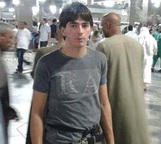
Hudhaifah Osman Suleiman 18
A Palestinian young man succumbed to his wounds in Tulkarem after being seriously injured during overnight clashes that broke out in the city. A total of 395 Palestinians were injured during the clashes.
Hudhaifah Osman Suleiman, 18, is the first Palestinian to be killed during the clashes that erupted late yesterday between Palestinian youths and Israeli forces in Tulkarem.
According to the data, a total of 395 Palestinians were injured in a fresh outbreak of violent clashes across the occupied territories on Sunday. 160 of the casualties were reported in occupied Jerusalem.
32 Palestinians were injured from live rounds and 118 from rubber bullets. 11 citizens suffered injuries sustained in beatings by Israeli security forces or settlers, while the rest suffered tear gas inhalation.
On Sunday, the Palestinian Red Crescent declared a level-three state of emergency in the West Bank and occupied Jerusalem.
It also reported at least 21 attacks against its staff and vehicles by Israeli forces and settlers over the past 72 hours.
Tensions had been steadily mounting in recent weeks across the West Bank and in occupied Jerusalem due to Israeli restrictions on Palestinians seeking to enter the Al-Aqsa Mosque compound and Israeli settlers’ provocative attacks on Palestinian citizens and properties.
A Palestinian young man succumbed to his wounds in Tulkarem after being seriously injured during overnight clashes that broke out in the city. A total of 395 Palestinians were injured during the clashes.
Hudhaifah Osman Suleiman, 18, is the first Palestinian to be killed during the clashes that erupted late yesterday between Palestinian youths and Israeli forces in Tulkarem.
According to the data, a total of 395 Palestinians were injured in a fresh outbreak of violent clashes across the occupied territories on Sunday. 160 of the casualties were reported in occupied Jerusalem.
32 Palestinians were injured from live rounds and 118 from rubber bullets. 11 citizens suffered injuries sustained in beatings by Israeli security forces or settlers, while the rest suffered tear gas inhalation.
On Sunday, the Palestinian Red Crescent declared a level-three state of emergency in the West Bank and occupied Jerusalem.
It also reported at least 21 attacks against its staff and vehicles by Israeli forces and settlers over the past 72 hours.
Tensions had been steadily mounting in recent weeks across the West Bank and in occupied Jerusalem due to Israeli restrictions on Palestinians seeking to enter the Al-Aqsa Mosque compound and Israeli settlers’ provocative attacks on Palestinian citizens and properties.
4 oct 2015
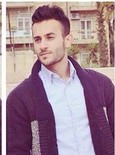
The 19-year old Fadi Samir Mustafa Alloun passed away on Sunday early morning after he was shot by the Israeli police in the area of Al-Musrara across from Damascus Gate in Jerusalem.
The Marty’s family denied the occupation authorities’ claims that Fadi carried out a stabbing attack against a settler and explained that the occupation’s intelligence is detaining the body and did not inform the family of any details regarding the time of receiving the body or where it is detained.
A video showed that 7 bullets were fired towards the Martyr Fadi in the presence of a group of settlers that were inciting on killing and shooting Fadi. Another video showed the young man on the ground and a settler kicks him with his foot and other settlers were verbally insulting him.
The Martyr’s family and follow-up committee in the village of Esawyeh accused the occupation authorities of murdering Fadi Alloun as he was shot multiple times while walking in the area of Al-Musrara.
It is noteworthy that large groups of settlers gathered late Saturday night in the area of Al-Musrara and carried out several attacks against Arab vehicles and also chanted against Arabs.
Raiding the Martyr’s house
The occupation forces along with Israeli Intelligence raided the house of Martyr Alloun in the village of Esawyeh and searched it. They arrested the Martyr’s father and uncle.
Refusing to release the Martyrs’ bodies
Al-Dameer organization lawyer, Mohammad Mahmoud, explained that the occupation intelligence informed him that they refuse to hand the bodies of the Martyrs Fadi Alloun and Mohannad Halabi at this time; note that they are at ”Abu Kbeir” hospital.
The Marty’s family denied the occupation authorities’ claims that Fadi carried out a stabbing attack against a settler and explained that the occupation’s intelligence is detaining the body and did not inform the family of any details regarding the time of receiving the body or where it is detained.
A video showed that 7 bullets were fired towards the Martyr Fadi in the presence of a group of settlers that were inciting on killing and shooting Fadi. Another video showed the young man on the ground and a settler kicks him with his foot and other settlers were verbally insulting him.
The Martyr’s family and follow-up committee in the village of Esawyeh accused the occupation authorities of murdering Fadi Alloun as he was shot multiple times while walking in the area of Al-Musrara.
It is noteworthy that large groups of settlers gathered late Saturday night in the area of Al-Musrara and carried out several attacks against Arab vehicles and also chanted against Arabs.
Raiding the Martyr’s house
The occupation forces along with Israeli Intelligence raided the house of Martyr Alloun in the village of Esawyeh and searched it. They arrested the Martyr’s father and uncle.
Refusing to release the Martyrs’ bodies
Al-Dameer organization lawyer, Mohammad Mahmoud, explained that the occupation intelligence informed him that they refuse to hand the bodies of the Martyrs Fadi Alloun and Mohannad Halabi at this time; note that they are at ”Abu Kbeir” hospital.
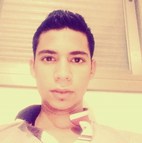
Mohanned Shafiq Halabi 19
The Israeli occupation forces (IOF) at dawn Sunday stormed the family home of the deceased Palestinian youngster Muhannad Halabi, in Ramallah’s town of Serda, in the central West Bank, hours after they shot him dead.
According to local sources, the Israeli occupation troops broke into Halabi’s home and subjected all the family members, who have been bidding last farewell to their slain son, to exhaustive interrogation.
The break-in sparked violent clashes between the Palestinian natives and the heavily-armed occupation troops.
The IOF attacked the Palestinian citizens with randomly-shot live rounds and tear gas canisters.
Youngster Halabi, a university student and a resident of Ramallah’s town of Serda, was shot dead by the IOF in Occupied Jerusalem city on Saturday night.
Simmering tension has rocked Occupied Jerusalem city and the vicinity of the holy al-Aqsa Mosque after the Israeli occupation soldiers and settlers escalated preplanned terrorism in and around such a holy place of worship.
The Israeli occupation forces (IOF) at dawn Sunday stormed the family home of the deceased Palestinian youngster Muhannad Halabi, in Ramallah’s town of Serda, in the central West Bank, hours after they shot him dead.
According to local sources, the Israeli occupation troops broke into Halabi’s home and subjected all the family members, who have been bidding last farewell to their slain son, to exhaustive interrogation.
The break-in sparked violent clashes between the Palestinian natives and the heavily-armed occupation troops.
The IOF attacked the Palestinian citizens with randomly-shot live rounds and tear gas canisters.
Youngster Halabi, a university student and a resident of Ramallah’s town of Serda, was shot dead by the IOF in Occupied Jerusalem city on Saturday night.
Simmering tension has rocked Occupied Jerusalem city and the vicinity of the holy al-Aqsa Mosque after the Israeli occupation soldiers and settlers escalated preplanned terrorism in and around such a holy place of worship.

Fadi Samir Alloun 19
Israeli soldiers shot and killed, on Sunday at dawn, a Palestinian teenager in the al-Misrara area, in Bab al-Amoud in occupied east Jerusalem. The Israeli army claimed that the slain Palestinian stabbed an Israeli teen, causing moderate wounds.
The slain Palestinian has been identified as Fadi Samir ‘Alloun, 19 years of age. Eyewitnesses said the soldiers fired more than ten live rounds at the Palestinian, after chasing him.
After the Palestinian was shot, and lying motionless on the ground, several Israelis approached him, and started kicking him while shouting and cursing at him.
Israeli daily, Haaretz, said a Jewish teen, 15 years of age, suffered moderate wounds in the attack, and was transferred to the Shaare Zedek Medical Center, suffering stab injuries to his back and chest.
Dozens of Israelis also gathered in roads and alleys, especially in al-Misrara and Bab al-‘Amoud, hurled stones on Palestinian cars, and attacked several residents.
On Saturday during the day, Israeli soldiers shot and killed Mohannad Shafiq Halabi, 19 years of age, who stabbed an armed Israeli, then shot several others after grabbing the gun from the man he stabbed.
Police cold-bloodedly kill Jerusalemite young man at dawn
The Israeli occupation police at dawn Sunday shot dead a Palestinian young man in cold blood near Bab al-Amoud area in the Old City of Jerusalem, claiming he stabbed a Jewish settler and wounded him.
Local sources said that Israeli policemen fired seven bullets at 19-year-old Fadi Alloun, an athlete from Issawiya district, and killed him immediately.
A video recording posted on the Internet also showed the cold-blooded shooting of the young man as several settlers gathered at the scene shouting "death to Arabs."
The Israeli police justified the killing of the young man by saying that some of its men opened fire at him after he stabbed a young settler near Bab al-Amoud area and tried to escape.
They also claimed that the settler was rushed to Shaare Zedek hospital in Jerusalem.
Scores of Jewish settlers last night stormed under police protection several Palestinian neighborhoods in Occupied Jerusalem and attacked citizens and their property.
A large number of settlers also organized yesterday several anti-Arab marches and sit-ins in different areas of Jerusalem and harassed Palestinian passers-by.
Israeli soldiers shot and killed, on Sunday at dawn, a Palestinian teenager in the al-Misrara area, in Bab al-Amoud in occupied east Jerusalem. The Israeli army claimed that the slain Palestinian stabbed an Israeli teen, causing moderate wounds.
The slain Palestinian has been identified as Fadi Samir ‘Alloun, 19 years of age. Eyewitnesses said the soldiers fired more than ten live rounds at the Palestinian, after chasing him.
After the Palestinian was shot, and lying motionless on the ground, several Israelis approached him, and started kicking him while shouting and cursing at him.
Israeli daily, Haaretz, said a Jewish teen, 15 years of age, suffered moderate wounds in the attack, and was transferred to the Shaare Zedek Medical Center, suffering stab injuries to his back and chest.
Dozens of Israelis also gathered in roads and alleys, especially in al-Misrara and Bab al-‘Amoud, hurled stones on Palestinian cars, and attacked several residents.
On Saturday during the day, Israeli soldiers shot and killed Mohannad Shafiq Halabi, 19 years of age, who stabbed an armed Israeli, then shot several others after grabbing the gun from the man he stabbed.
Police cold-bloodedly kill Jerusalemite young man at dawn
The Israeli occupation police at dawn Sunday shot dead a Palestinian young man in cold blood near Bab al-Amoud area in the Old City of Jerusalem, claiming he stabbed a Jewish settler and wounded him.
Local sources said that Israeli policemen fired seven bullets at 19-year-old Fadi Alloun, an athlete from Issawiya district, and killed him immediately.
A video recording posted on the Internet also showed the cold-blooded shooting of the young man as several settlers gathered at the scene shouting "death to Arabs."
The Israeli police justified the killing of the young man by saying that some of its men opened fire at him after he stabbed a young settler near Bab al-Amoud area and tried to escape.
They also claimed that the settler was rushed to Shaare Zedek hospital in Jerusalem.
Scores of Jewish settlers last night stormed under police protection several Palestinian neighborhoods in Occupied Jerusalem and attacked citizens and their property.
A large number of settlers also organized yesterday several anti-Arab marches and sit-ins in different areas of Jerusalem and harassed Palestinian passers-by.
3 oct 2015
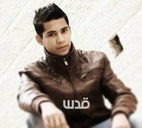
Mohanned Shafiq Halabi 19
A Palestinian man was shot to death by Israeli police after allegedly stabbing an armed Israeli, grabbing to death two Israelis and wounding two others in the Old City of Jerusalem.
The attacker was identified as Mohanned Shafiq Halabi, 19, from Al-Bireh town, near Ramallah.
The victims are reportedly all members of the same ultra-Orthodox family. A forty year old man was pronounced dead at the scene, while a woman was listed in critical condition in Hadassah medical center in Jerusalem.
A two year old was reportedly mildly injured, and was taken to Shaare Zedek Medical Center.
Following the attack, Israeli police stormed the Old City, ransacking shops and forcing Palestinians out of the area around the Lion's Gate, where the attack took place.
This assault comes after weeks of escalating attacks by the Israeli military and settlers in the Old City of Jerusalem, specifically targeting the Al-Aqsa Mosque, the third holiest site of Islam.
Palestinians under age 50 have been barred from the area this entire week, as the Jewish festival of Sukkot, commemorating seven days of harvest and remembering the years that Jews spent wandering in the desert after escaping slavery in Egypt.
The Martyrdom of the stabbing attacker in Jerusalem
The spokesman of Israeli paramedics announced the Martyrdom of a Palestinian young man with Israeli police’s fire after he carried out a stabbing attack against a group of settlers in Al-Wad Street in the Old City of Jerusalem; two other settlers were announced dead.
The Israeli police said that the attacker is 19-year old Mohannad Shafiq Halabi from Ramallah; he passed away after being shot.
Police also said in a statement that Israeli forces shot an Arab young man and critically injured him after he stabbed and shot settlers resulting in more than one critical injury.
Witnesses said that the Palestinian young man stabbed two Israeli in Al-Wad Street. One settler tried to shoot the young man managed to steal the settlers’ gun and shoot him. An infantry force immediately arrived and exchanged fire with the young man; one soldier was injured while the young man suffered critical injuries and was announced deal afterwards.
The occupation forces turned the city of Jerusalem into a military camp and prevented people from entering the Old City of Jerusalem and emptied the markets and neighborhoods of any pedestrians. They also attacked and assaulted any young man in the streets.
Wadi Hilweh Information Center was informed that the forces established iron barriers at all of Al-Aqsa gates and closed some of the roads leading to them.
A Palestinian man was shot to death by Israeli police after allegedly stabbing an armed Israeli, grabbing to death two Israelis and wounding two others in the Old City of Jerusalem.
The attacker was identified as Mohanned Shafiq Halabi, 19, from Al-Bireh town, near Ramallah.
The victims are reportedly all members of the same ultra-Orthodox family. A forty year old man was pronounced dead at the scene, while a woman was listed in critical condition in Hadassah medical center in Jerusalem.
A two year old was reportedly mildly injured, and was taken to Shaare Zedek Medical Center.
Following the attack, Israeli police stormed the Old City, ransacking shops and forcing Palestinians out of the area around the Lion's Gate, where the attack took place.
This assault comes after weeks of escalating attacks by the Israeli military and settlers in the Old City of Jerusalem, specifically targeting the Al-Aqsa Mosque, the third holiest site of Islam.
Palestinians under age 50 have been barred from the area this entire week, as the Jewish festival of Sukkot, commemorating seven days of harvest and remembering the years that Jews spent wandering in the desert after escaping slavery in Egypt.
The Martyrdom of the stabbing attacker in Jerusalem
The spokesman of Israeli paramedics announced the Martyrdom of a Palestinian young man with Israeli police’s fire after he carried out a stabbing attack against a group of settlers in Al-Wad Street in the Old City of Jerusalem; two other settlers were announced dead.
The Israeli police said that the attacker is 19-year old Mohannad Shafiq Halabi from Ramallah; he passed away after being shot.
Police also said in a statement that Israeli forces shot an Arab young man and critically injured him after he stabbed and shot settlers resulting in more than one critical injury.
Witnesses said that the Palestinian young man stabbed two Israeli in Al-Wad Street. One settler tried to shoot the young man managed to steal the settlers’ gun and shoot him. An infantry force immediately arrived and exchanged fire with the young man; one soldier was injured while the young man suffered critical injuries and was announced deal afterwards.
The occupation forces turned the city of Jerusalem into a military camp and prevented people from entering the Old City of Jerusalem and emptied the markets and neighborhoods of any pedestrians. They also attacked and assaulted any young man in the streets.
Wadi Hilweh Information Center was informed that the forces established iron barriers at all of Al-Aqsa gates and closed some of the roads leading to them.
1 oct 2015
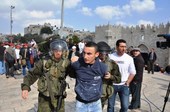
Ahrar Center for Prisoners and Human Rights revealed that Israel has killed 15 Palestinians and arrested 1,213 others since last July.
In a report covering Israeli violations in the West Bank, Occupied Jerusalem and Gaza Strip during the third quarter of 2015, the center listed the names of 15 Palestinian martyrs, most remarkable, the Dawabsheh family who were burned by fanatic settlers in Duma town near Nablus.
The report stated that 512 of the arrested are from Occupied Jerusalem, 176 from al-Khalil, 155 from Ramallah and al-Bireh, 112 from Nablus, 64 from Jenin, 20 from Tulkarem, 9 from Qalqilya, 8 from Jericho, 3 from Safit and 3 from Tubas.
The human rights report documented 102 cases of arrest among minors mostly from Occupied Jerusalem and al-Khalil. 60 Palestinians from Gaza Strip were held captive including 8 fishermen who were arrested while fishing in Gaza sea.
Israeli forces rounded up 103 Palestinians from the blockaded Gaza Strip for attempting to cross the security fence into 1948 Occupied Palestine, the report pointed out.
In a report covering Israeli violations in the West Bank, Occupied Jerusalem and Gaza Strip during the third quarter of 2015, the center listed the names of 15 Palestinian martyrs, most remarkable, the Dawabsheh family who were burned by fanatic settlers in Duma town near Nablus.
The report stated that 512 of the arrested are from Occupied Jerusalem, 176 from al-Khalil, 155 from Ramallah and al-Bireh, 112 from Nablus, 64 from Jenin, 20 from Tulkarem, 9 from Qalqilya, 8 from Jericho, 3 from Safit and 3 from Tubas.
The human rights report documented 102 cases of arrest among minors mostly from Occupied Jerusalem and al-Khalil. 60 Palestinians from Gaza Strip were held captive including 8 fishermen who were arrested while fishing in Gaza sea.
Israeli forces rounded up 103 Palestinians from the blockaded Gaza Strip for attempting to cross the security fence into 1948 Occupied Palestine, the report pointed out.
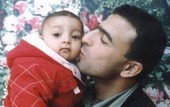
A Palestinian collaborator with Israeli occupation disclosed that Israel targeted the fighter’s vehicle despite knowing about the presence of his wife and young girl in the car.
The unnamed collaborator confessed that he was involved in the assassination of a Palestinian resistance fighter, Yaser Taha, in 2003.
A security source of Hamas said that Israeli intelligence officers followed the car that was carrying Martyr Yaser Taha in Gaza in 2003 and ordered to strike it with three missiles. This led to the death of fighter Taha, his little girl, and his wife who was pregnant.
The fighter belonged to al-Qassam Brigades, the armed wing of Hamas Resistance Movement.
Israel has always blackmailed vulnerable Palestinians and turned them against their own people.
The unnamed collaborator confessed that he was involved in the assassination of a Palestinian resistance fighter, Yaser Taha, in 2003.
A security source of Hamas said that Israeli intelligence officers followed the car that was carrying Martyr Yaser Taha in Gaza in 2003 and ordered to strike it with three missiles. This led to the death of fighter Taha, his little girl, and his wife who was pregnant.
The fighter belonged to al-Qassam Brigades, the armed wing of Hamas Resistance Movement.
Israel has always blackmailed vulnerable Palestinians and turned them against their own people.
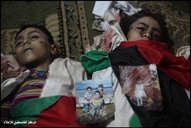
Ramallah, September 30, 2015—Children represent 46.2 percent of the 4.68 million Palestinians living in the West Bank, including East Jerusalem, and the Gaza Strip. Instability and violence has defined much of their lives since September 2000 when the second intifada, or uprising, broke out against Israeli military occupation of Palestinian territory.
The five-year period of conflict erupted after Ariel Sharon, then opposition leader of the Likud party, visited the Al-Aqsa Mosque compound, Islam’s third holiest site, in Jerusalem’s Old City accompanied by 1,000 Israeli police officers on September 28, 2000. More than 700 Palestinian children died at the hands of Israeli forces and settlers between September 2000 and February 2005, according to Defense for Children International - Palestine research. Since then, at least 1,296 Palestinian children have been killed, including 551 in 2014 alone, the majority during Israeli military offensives on the Gaza Strip.
The deadliest Israeli military offensive, Operation Protective Edge, lasted 50 days between July 8 and August 26, 2014, and claimed the lives of at least 2,220 Palestinians. DCIP independently verified the deaths of 547 Palestinian children among the killed in Gaza, 535 of them as a direct result of Israeli attacks. Nearly 68 percent of the children killed by Israeli forces were 12 years old or younger. The second deadliest Israeli military offensive, Operation Cast Lead, launched on December 27, 2008, lasted 22 days, and claimed the lives of at least 1,400 Palestinians, including more than 350 Palestinian children.
Displacement, access to education and health care, and psychological trauma remain significant areas of concern for children in Gaza, particularly in the wake of Israel’s 2014 assault and eight-year blockade on Gaza.
In the West Bank, including East Jerusalem, Palestinian children have endured heightened levels of violence in recent years, as Israeli soldiers and police use excessive force to quash protests. Since 2014, 15 Palestinian children have died at the hands of Israeli forces, all except one with live ammunition, according to DCIP documentation. DCIP found no evidence that any of those children posed a direct threat to Israeli troops or settlers. OCHA estimated a further 1,477 children were injured in the West Bank from Israeli live fire and crowd control weapons, including rubber-coated metal bullets, tear gas canisters, water cannons, and sound grenades, during the past 21 months.
Earlier this month, Israeli authorities amended open-fire rules to allow Israeli forces to fire live ammunition during protests in Jerusalem when there is a “threat to life.” Previously, the regulations permitted live ammunition only when there is a direct, mortal threat to the life of a police officer or soldier. The move comes as Israeli officials also push forward stricter sentencing guidelines and fines for stone-throwers.
Palestinian children in the West Bank, like adults, also face arrest, prosecution, and detention under an Israeli military court system that denies them basic rights. Since 1967, Israel has operated two separate legal systems in the same territory: Israeli settlers live under civilian law whereas Palestinians are subject to martial law. Israel applies civilian law to Palestinian children in East Jerusalem. Israel is the only country in the world that prosecutes between 500 and 700 children in military courts each year. No Israeli child comes into contact with the military court system.
Since 2000, DCIP estimates that at least 8,500 Palestinian children wound up arrested by Israeli forces and prosecuted in the Israeli military detention system. Between 2012 and 2014, Israel held an average of 198 Palestinian children in custody each month, according to data provided by the Israel Prison Service. The majority of them faced charges of throwing stones.
DCIP received affidavits from 107 West Bank children detained during 2014 that showed three-quarters of them endured some form of physical violence following arrest. Israeli interrogators also used position abuse, threats, and solitary confinement to coerce confessions from some children. In 93 percent of these cases, Israeli authorities deprived children of legal counsel and failed to inform them properly of their rights. The Israeli newspaper Haaretz obtained a military court report in 2011 that showed a 99.7 percent conviction rate for Palestinian defendants.
In 1991, Israel ratified the United Nations Convention on the Rights of the Child (CRC). During its initial review in 2002, the Committee on the Rights of the Child, the UN body that monitors implementation of the CRC, expressed serious concern regarding “allegations and complaints of inhuman or degrading practices and of torture and ill-treatment of Palestinian children” during arrest, interrogation and detention.
More than a decade later, the only change is that ill-treatment of Palestinian children in Israeli military detention has become widespread and systematic. In June 2013, the Committee declared that Palestinian children arrested by Israeli forces continue to be “systematically subject to degrading treatment, and often to acts of torture” and that Israel had “fully disregarded” previous recommendations to comply with international law.
The past 15 years have also seen a growing number of Palestinian children and their families live in villages and towns hemmed in by expanding and often violent Israeli settler communities. Since Israel occupied the West Bank, including East Jerusalem, in 1967, it has established some 125 Jewish-only settlements that house 515,000 Israelis. The international community considers them illegal. Israel, however, claims religious and historical rights to the territory.
Stationed throughout the West Bank, Israeli soldiers, police, and private security firms protect settler populations at the expense of Palestinian civilians. In this hyper-militarized environment, Palestinian children have faced disproportionate physical violence, restricted access to education, and psychological trauma.
The five-year period of conflict erupted after Ariel Sharon, then opposition leader of the Likud party, visited the Al-Aqsa Mosque compound, Islam’s third holiest site, in Jerusalem’s Old City accompanied by 1,000 Israeli police officers on September 28, 2000. More than 700 Palestinian children died at the hands of Israeli forces and settlers between September 2000 and February 2005, according to Defense for Children International - Palestine research. Since then, at least 1,296 Palestinian children have been killed, including 551 in 2014 alone, the majority during Israeli military offensives on the Gaza Strip.
The deadliest Israeli military offensive, Operation Protective Edge, lasted 50 days between July 8 and August 26, 2014, and claimed the lives of at least 2,220 Palestinians. DCIP independently verified the deaths of 547 Palestinian children among the killed in Gaza, 535 of them as a direct result of Israeli attacks. Nearly 68 percent of the children killed by Israeli forces were 12 years old or younger. The second deadliest Israeli military offensive, Operation Cast Lead, launched on December 27, 2008, lasted 22 days, and claimed the lives of at least 1,400 Palestinians, including more than 350 Palestinian children.
Displacement, access to education and health care, and psychological trauma remain significant areas of concern for children in Gaza, particularly in the wake of Israel’s 2014 assault and eight-year blockade on Gaza.
In the West Bank, including East Jerusalem, Palestinian children have endured heightened levels of violence in recent years, as Israeli soldiers and police use excessive force to quash protests. Since 2014, 15 Palestinian children have died at the hands of Israeli forces, all except one with live ammunition, according to DCIP documentation. DCIP found no evidence that any of those children posed a direct threat to Israeli troops or settlers. OCHA estimated a further 1,477 children were injured in the West Bank from Israeli live fire and crowd control weapons, including rubber-coated metal bullets, tear gas canisters, water cannons, and sound grenades, during the past 21 months.
Earlier this month, Israeli authorities amended open-fire rules to allow Israeli forces to fire live ammunition during protests in Jerusalem when there is a “threat to life.” Previously, the regulations permitted live ammunition only when there is a direct, mortal threat to the life of a police officer or soldier. The move comes as Israeli officials also push forward stricter sentencing guidelines and fines for stone-throwers.
Palestinian children in the West Bank, like adults, also face arrest, prosecution, and detention under an Israeli military court system that denies them basic rights. Since 1967, Israel has operated two separate legal systems in the same territory: Israeli settlers live under civilian law whereas Palestinians are subject to martial law. Israel applies civilian law to Palestinian children in East Jerusalem. Israel is the only country in the world that prosecutes between 500 and 700 children in military courts each year. No Israeli child comes into contact with the military court system.
Since 2000, DCIP estimates that at least 8,500 Palestinian children wound up arrested by Israeli forces and prosecuted in the Israeli military detention system. Between 2012 and 2014, Israel held an average of 198 Palestinian children in custody each month, according to data provided by the Israel Prison Service. The majority of them faced charges of throwing stones.
DCIP received affidavits from 107 West Bank children detained during 2014 that showed three-quarters of them endured some form of physical violence following arrest. Israeli interrogators also used position abuse, threats, and solitary confinement to coerce confessions from some children. In 93 percent of these cases, Israeli authorities deprived children of legal counsel and failed to inform them properly of their rights. The Israeli newspaper Haaretz obtained a military court report in 2011 that showed a 99.7 percent conviction rate for Palestinian defendants.
In 1991, Israel ratified the United Nations Convention on the Rights of the Child (CRC). During its initial review in 2002, the Committee on the Rights of the Child, the UN body that monitors implementation of the CRC, expressed serious concern regarding “allegations and complaints of inhuman or degrading practices and of torture and ill-treatment of Palestinian children” during arrest, interrogation and detention.
More than a decade later, the only change is that ill-treatment of Palestinian children in Israeli military detention has become widespread and systematic. In June 2013, the Committee declared that Palestinian children arrested by Israeli forces continue to be “systematically subject to degrading treatment, and often to acts of torture” and that Israel had “fully disregarded” previous recommendations to comply with international law.
The past 15 years have also seen a growing number of Palestinian children and their families live in villages and towns hemmed in by expanding and often violent Israeli settler communities. Since Israel occupied the West Bank, including East Jerusalem, in 1967, it has established some 125 Jewish-only settlements that house 515,000 Israelis. The international community considers them illegal. Israel, however, claims religious and historical rights to the territory.
Stationed throughout the West Bank, Israeli soldiers, police, and private security firms protect settler populations at the expense of Palestinian civilians. In this hyper-militarized environment, Palestinian children have faced disproportionate physical violence, restricted access to education, and psychological trauma.
26 sept 2015
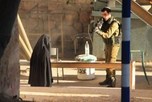
Evidence obtained by Amnesty International indicated that the killing of the Palestinian girl Hadeel al-Hashlamoun by the Israeli occupation forces in al-Khalil, in the occupied West Bank, on 22 September 2015 was an extrajudicial execution.
According to a report by Amnesty International, Israeli soldiers shot and mortally wounded 18-year-old Hadeel al-Hashlamoun after they stopped her at a checkpoint in the Old City in al-Khalil.
Pictures of the stand-off that led to her death and accounts by eyewitnesses interviewed by Amnesty International show that Hadeel at no time posed a threat to the soldiers to make their use of deliberate lethal force permissible.
This killing is the latest in a long line of unlawful killings carried out by the Israeli occupation forces in the occupied West Bank with near total impunity, Amnesty said.
Two eyewitnesses with whom Amnesty International spoke separately said that al-Hashlamoun arrived at the checkpoint at around 7.40 am, and was stopped by two occupation soldiers at the checkpoint and ordered to open her bag for a search. She was standing still, around three meters from the soldiers. She opened her bag and showed it to the soldiers, who began to shout at her, at which point she froze, according to the eyewitnesses.
One of the eyewitnesses, Fawaz Abu Aisheh, 34, told Amnesty International that the Israeli soldiers were instructing al-Hashlamoun to “go back” in Hebrew, a language she seemed not to understand.
According to Abu Aisheh, the soldier who had shot first got up and moved closer to her, until he was about a meter away, and then shot at her upper body four or five times again while she was lying motionless on the ground. He said that the soldier shot a few times despite other soldiers yelling at him to stop. The first witness also described the soldier moving closer to al-Hashlamoun and shooting her in the chest.
According to the organization, Israeli accounts of events is contradicted by statements made by the two eyewitnesses interviewed by Amnesty International and photographs of the incident which show al-Hashlamoun standing still.
Shooting al-Hashlamoun again multiple times as she lay wounded on the ground indicates that her killing was an extrajudicial execution.
Unlawful and deliberate killings carried out by order of government or military officials, or with their complicity or acquiescence, amount to extrajudicial executions, which are prohibited at all times and constitute crimes under international law, the report added.
An extrajudicial execution would also constitute a willful killing, which is a grave breach of the Fourth Geneva Convention, which applies to Israel’s long-standing military occupation of Palestinian territories, and a war crime.
Palestinian residents of al-Khalil have often had their freedom of movement and their economic rights severely curtailed. In addition, Palestinians are often subject to arbitrary detention and humiliating treatment by the Israeli occupation officers stationed in the city, and are often subject to settler violence, which the Israeli authorities fail to investigate effectively.
According to a report by Amnesty International, Israeli soldiers shot and mortally wounded 18-year-old Hadeel al-Hashlamoun after they stopped her at a checkpoint in the Old City in al-Khalil.
Pictures of the stand-off that led to her death and accounts by eyewitnesses interviewed by Amnesty International show that Hadeel at no time posed a threat to the soldiers to make their use of deliberate lethal force permissible.
This killing is the latest in a long line of unlawful killings carried out by the Israeli occupation forces in the occupied West Bank with near total impunity, Amnesty said.
Two eyewitnesses with whom Amnesty International spoke separately said that al-Hashlamoun arrived at the checkpoint at around 7.40 am, and was stopped by two occupation soldiers at the checkpoint and ordered to open her bag for a search. She was standing still, around three meters from the soldiers. She opened her bag and showed it to the soldiers, who began to shout at her, at which point she froze, according to the eyewitnesses.
One of the eyewitnesses, Fawaz Abu Aisheh, 34, told Amnesty International that the Israeli soldiers were instructing al-Hashlamoun to “go back” in Hebrew, a language she seemed not to understand.
According to Abu Aisheh, the soldier who had shot first got up and moved closer to her, until he was about a meter away, and then shot at her upper body four or five times again while she was lying motionless on the ground. He said that the soldier shot a few times despite other soldiers yelling at him to stop. The first witness also described the soldier moving closer to al-Hashlamoun and shooting her in the chest.
According to the organization, Israeli accounts of events is contradicted by statements made by the two eyewitnesses interviewed by Amnesty International and photographs of the incident which show al-Hashlamoun standing still.
Shooting al-Hashlamoun again multiple times as she lay wounded on the ground indicates that her killing was an extrajudicial execution.
Unlawful and deliberate killings carried out by order of government or military officials, or with their complicity or acquiescence, amount to extrajudicial executions, which are prohibited at all times and constitute crimes under international law, the report added.
An extrajudicial execution would also constitute a willful killing, which is a grave breach of the Fourth Geneva Convention, which applies to Israel’s long-standing military occupation of Palestinian territories, and a war crime.
Palestinian residents of al-Khalil have often had their freedom of movement and their economic rights severely curtailed. In addition, Palestinians are often subject to arbitrary detention and humiliating treatment by the Israeli occupation officers stationed in the city, and are often subject to settler violence, which the Israeli authorities fail to investigate effectively.
